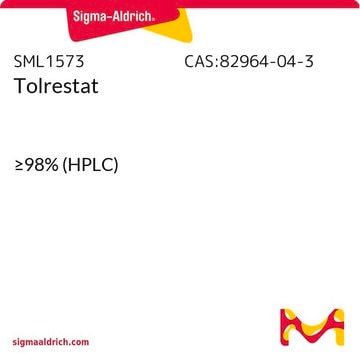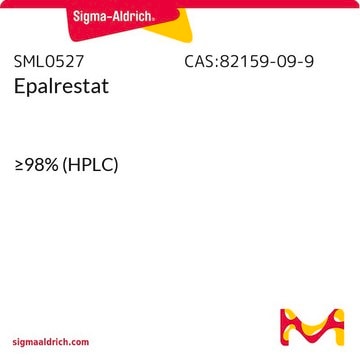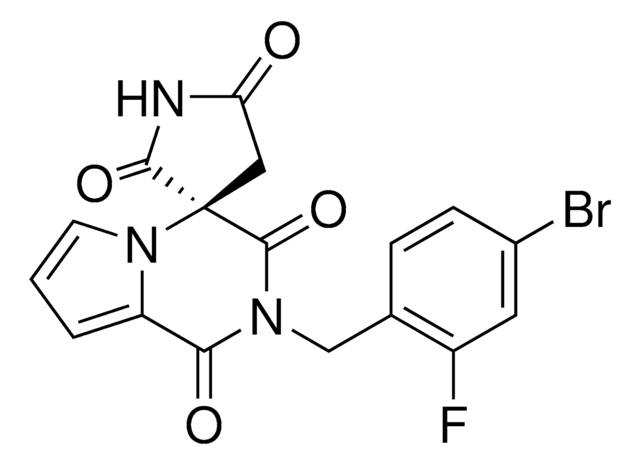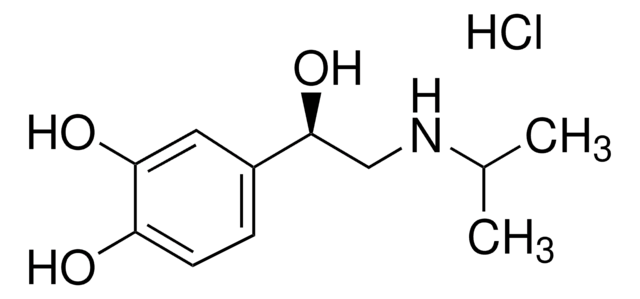Kluczowe dokumenty
S7701
Sorbinil
≥98% (HPLC)
Synonim(y):
(+)-(4S)-6-Fluorospiro[chroman-4,4′-imidazolidine]-2′,5′-dione, (4S)-6-Fluoro-2,3-dihydro-spiro[4H-1-benzopyran-4,4′-imidazolidine]-2′,5′-dione, CP 45634
Wybierz wielkość
591,00 zł
Wybierz wielkość
About This Item
591,00 zł
Polecane produkty
Poziom jakości
Próba
≥98% (HPLC)
Formularz
powder
aktywność optyczna
[α]/D +50 to +60°, c = 1 in methanol
kolor
white to off-white
rozpuszczalność
DMSO: ≥20 mg/mL
temp. przechowywania
2-8°C
ciąg SMILES
Fc1ccc2OCC[C@]3(NC(=O)NC3=O)c2c1
InChI
1S/C11H9FN2O3/c12-6-1-2-8-7(5-6)11(3-4-17-8)9(15)13-10(16)14-11/h1-2,5H,3-4H2,(H2,13,14,15,16)/t11-/m0/s1
Klucz InChI
LXANPKRCLVQAOG-NSHDSACASA-N
Zastosowanie
Działania biochem./fizjol.
Cechy i korzyści
Oświadczenie o zrzeczeniu się odpowiedzialności
Hasło ostrzegawcze
Warning
Zwroty wskazujące rodzaj zagrożenia
Zwroty wskazujące środki ostrożności
Klasyfikacja zagrożeń
Acute Tox. 4 Oral
Kod klasy składowania
11 - Combustible Solids
Klasa zagrożenia wodnego (WGK)
WGK 3
Temperatura zapłonu (°F)
Not applicable
Temperatura zapłonu (°C)
Not applicable
Wybierz jedną z najnowszych wersji:
Certyfikaty analizy (CoA)
Nie widzisz odpowiedniej wersji?
Jeśli potrzebujesz konkretnej wersji, możesz wyszukać konkretny certyfikat według numeru partii lub serii.
Masz już ten produkt?
Dokumenty związane z niedawno zakupionymi produktami zostały zamieszczone w Bibliotece dokumentów.
Produkty
DISCOVER Bioactive Small Molecules for Nitric Oxide & Cell Stress Research
Active Filters
Nasz zespół naukowców ma doświadczenie we wszystkich obszarach badań, w tym w naukach przyrodniczych, materiałoznawstwie, syntezie chemicznej, chromatografii, analityce i wielu innych dziedzinach.
Skontaktuj się z zespołem ds. pomocy technicznej









